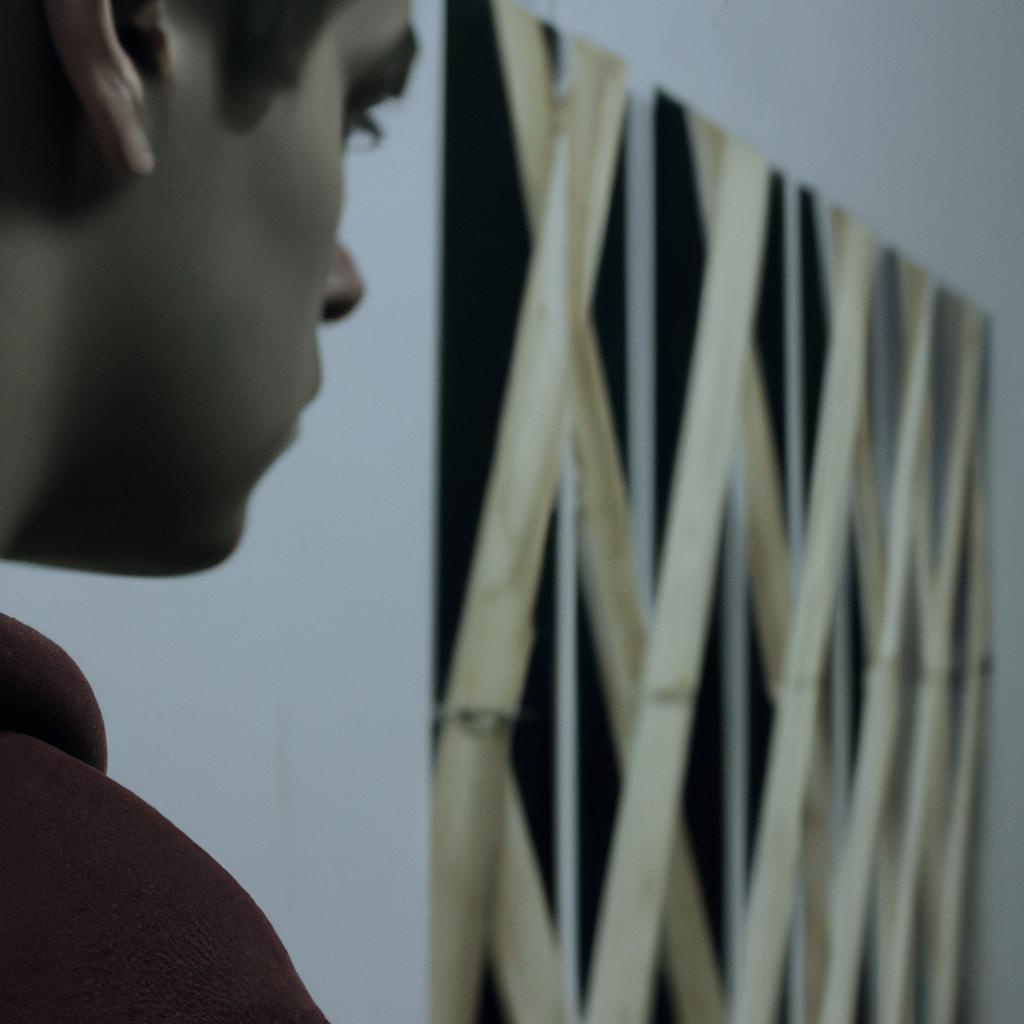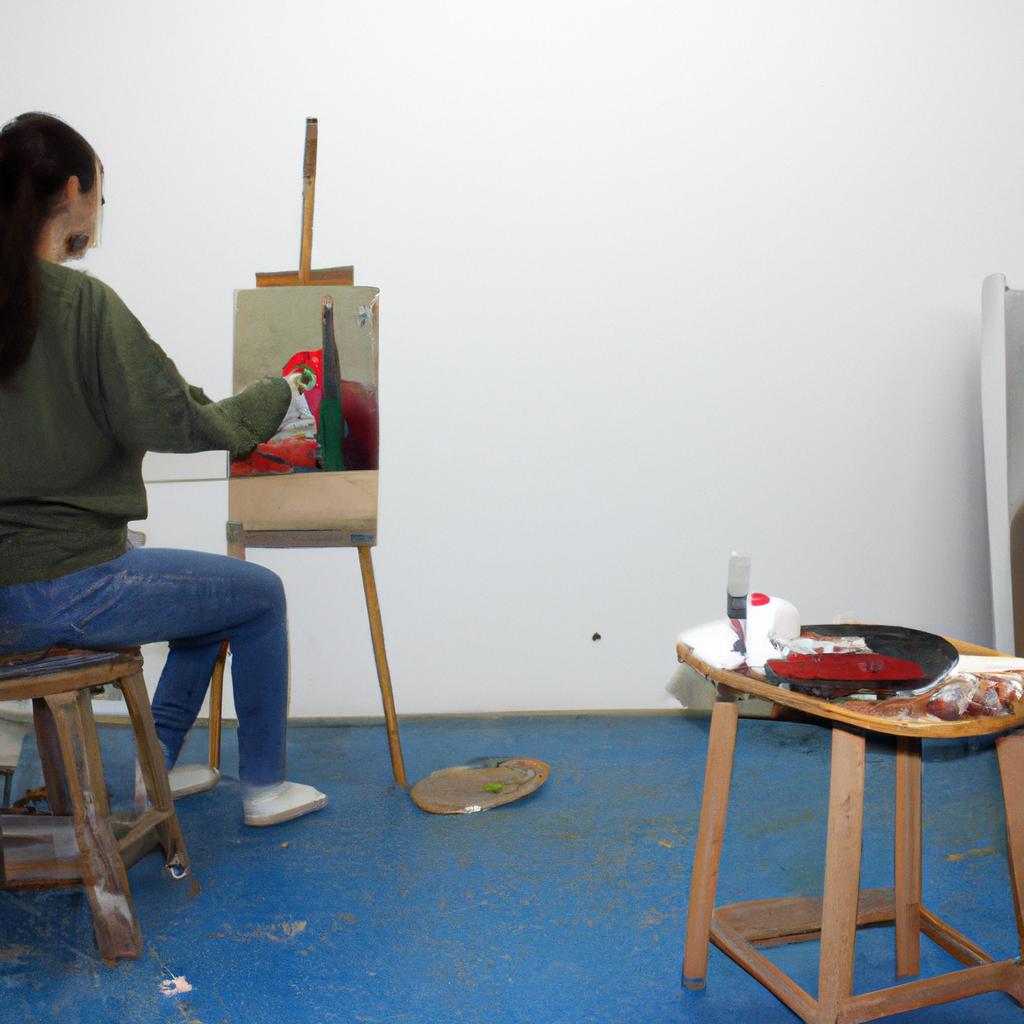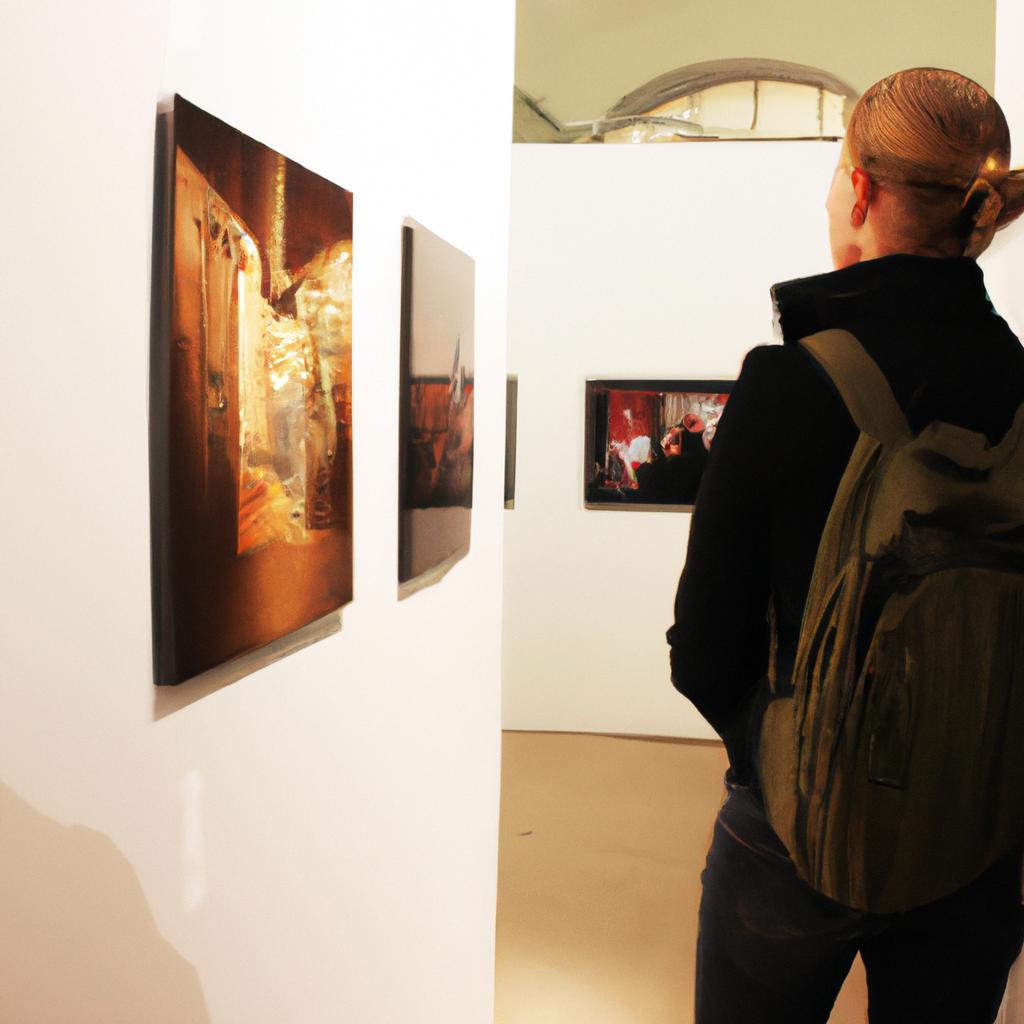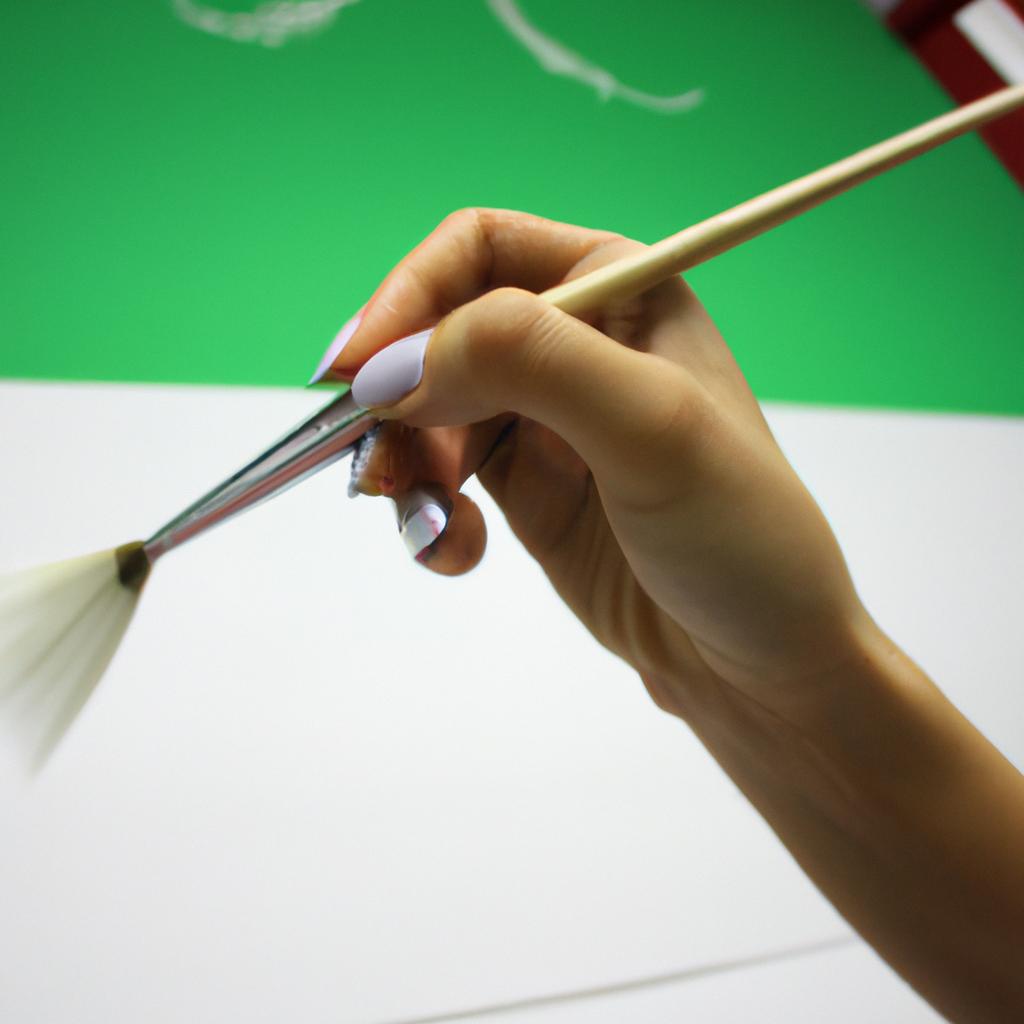Artistic Collaborations in Visual Arts: The Realm of Artistic Loans
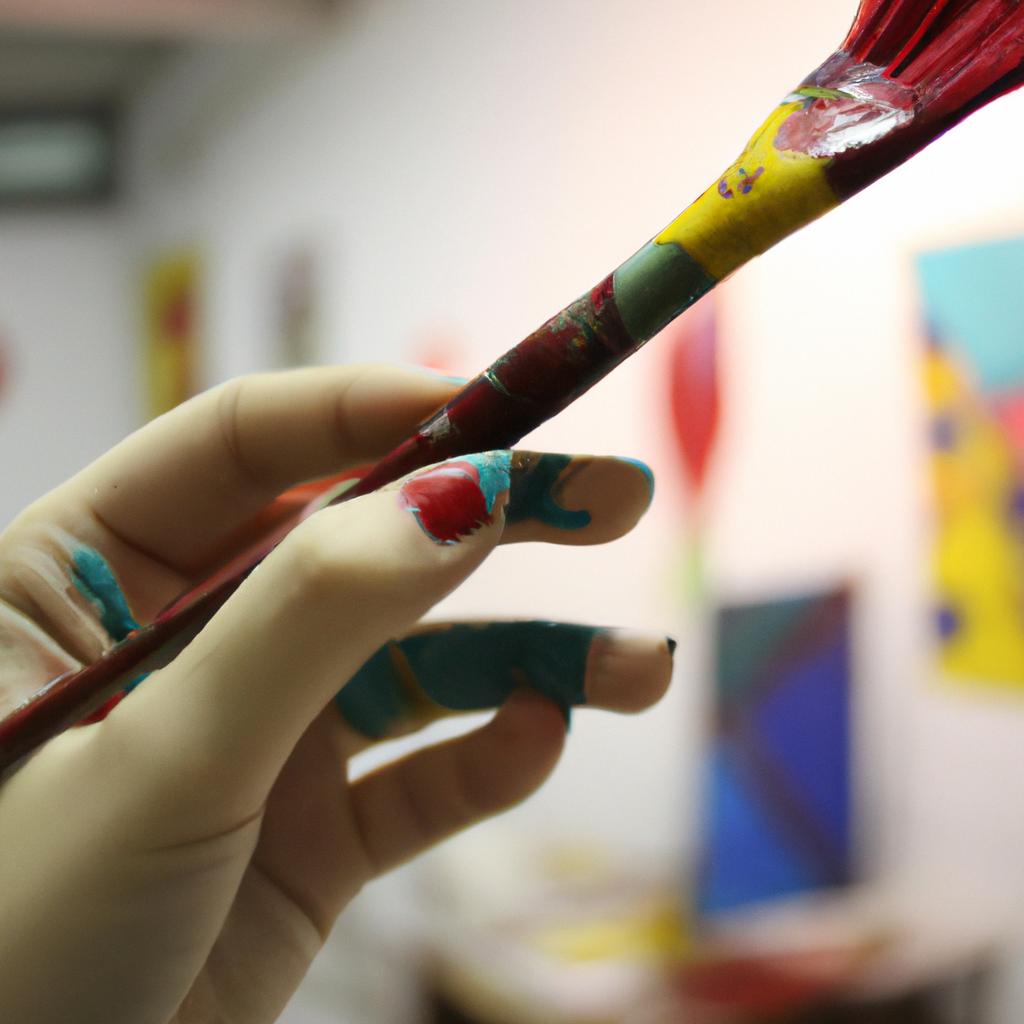
Artistic collaborations have long been a significant aspect of the visual arts, allowing artists to expand their creative horizons and explore new realms of expression. One such form of artistic collaboration that has gained prominence in recent years is the practice of artistic loans. Artistic loans involve borrowing artwork from other artists or institutions for display in exhibitions, galleries, or private collections. This article delves into the realm of artistic loans in visual arts, exploring its benefits, challenges, and impacts on both individual artists and the broader art community.
To illustrate this concept further, let us consider a hypothetical case study: The renowned artist A wants to curate an exhibition on contemporary sculpture but lacks sufficient pieces to create a comprehensive showcase. In search of diversity and depth, Artist A decides to collaborate with multiple fellow sculptors by loaning their artworks for the duration of the exhibition. This collaboration not only enriches the overall collection but also fosters a sense of camaraderie among participating artists. Through examining scenarios like these within the context of artistic loans in visual arts, we can gain valuable insights into how collaborative practices contribute to artistic growth and foster connections between creators.
Within the realm of artistic loans lie various intricacies that merit exploration – legal considerations surrounding ownership rights and insurance policies, logistical considerations such as transportation, installation, and preservation of the borrowed artworks, and ethical considerations regarding the proper attribution and acknowledgment of the artists involved.
From a legal standpoint, it is crucial to establish clear agreements between the borrowing artist or institution and the lending party. These agreements should outline the terms of loan duration, insurance coverage, and any other relevant conditions. It is important to ensure that all parties involved have a comprehensive understanding of their rights and responsibilities to avoid any potential disputes or complications.
Logistically, artistic loans require careful planning and coordination. The transportation of valuable artworks requires specialized handling and packaging to ensure their safety during transit. Additionally, once at the exhibition venue, proper installation techniques must be employed to showcase the borrowed artworks in the best possible light. Preservation considerations also come into play, as both the lending artist or institution and the borrowing party must take steps to safeguard the artworks from damage or deterioration throughout their loan period.
Ethical considerations are paramount in artistic loans as well. Proper attribution must be given to the lending artists for their contributions to the exhibition or collection. This includes providing accurate information about each artwork’s creator, title, medium, and any relevant contextual information. Open communication and transparency between all parties involved can help foster a collaborative spirit while ensuring that credit is rightly given.
The practice of artistic loans has several benefits for individual artists and the broader art community. For artists seeking to curate exhibitions or build collections, artistic loans provide an opportunity to access diverse works that they may not otherwise have access to due to budget constraints or limited networks. By collaborating with fellow artists through artistic loans, creators can form connections and gain exposure within their artistic communities.
Moreover, artistic loans contribute to cultural exchange by allowing different institutions or galleries to showcase works from various regions or styles. This can enrich viewers’ experiences by presenting them with a wider range of perspectives and aesthetics.
However, there are challenges associated with artistic loans as well. Borrowing artworks involves risks, such as potential damage during transportation or display. Adequate insurance coverage is necessary to mitigate these risks and protect the borrowed artworks. Additionally, logistical complexities can arise when coordinating loans between different locations or institutions.
In conclusion, artistic loans in visual arts offer numerous benefits and opportunities for collaboration. They allow artists to expand their creative horizons, foster connections within the art community, and provide audiences with diverse and enriching experiences. However, careful consideration of legal, logistical, and ethical aspects is crucial to ensure smooth collaborations and the proper care of borrowed artworks.
Historical examples of artistic collaborations
Artistic Collaborations in Visual Arts: The Realm of Artistic Loans
Historical examples of artistic collaborations have played a significant role in shaping the field of visual arts. One notable illustration is the collaboration between Pablo Picasso and Georges Braque during the early 20th century, which gave birth to the art movement known as Cubism. This groundbreaking partnership revolutionized traditional notions of representation by employing geometric shapes and multiple perspectives. Through their mutual exploration and experimentation, Picasso and Braque pushed the boundaries of what was considered acceptable within the realm of visual arts.
Collaborative efforts in the world of art have often sparked emotional responses from both artists and audiences alike. Such partnerships can evoke feelings of inspiration, fascination, and even controversy. They enable artists to challenge existing norms, break free from conventional techniques, and explore new possibilities together. Moreover, collaborations allow for a merging of different styles, ideas, and visions – resulting in unique artworks that transcend individual contributions.
To further exemplify this point, consider the following bullet points:
- Collaboration encourages artistic growth by fostering an exchange of knowledge and skills.
- It cultivates a sense of community among artists through shared experiences and challenges.
- Collaborations provide opportunities for interdisciplinary approaches, such as combining photography with sculpture or digital media with painting.
- Engaging in collaborative work allows artists to tap into each other’s strengths while compensating for their own weaknesses.
In addition to these benefits, historical records also shed light on various instances where artistic collaborations shaped entire movements or genres within visual arts. To illustrate this impact more clearly, refer to Table 1 below:
| Historical Collaboration | Contribution |
|---|---|
| Leonardo da Vinci & Verrocchio | Da Vinci’s apprenticeship under Verrocchio led him towards mastery in various artistic disciplines such as painting, sculpting, engineering etc. |
| Frida Kahlo & Diego Rivera | Their marriage served not only as a personal relationship but also as a professional collaboration, influencing each other’s artistic styles and subject matters. |
| Marcel Duchamp & Man Ray | Together they explored the world of conceptual art, challenging traditional notions of what constitutes an artwork. |
| Andy Warhol & Jean-Michel Basquiat | Their joint paintings combined Pop Art with Neo-Expressionism, resulting in visually striking pieces that incorporated elements from both movements. |
In conclusion, historical examples of artistic collaborations demonstrate the immense potential for growth and innovation within visual arts. By transcending individual limitations and embracing collective creativity, artists can push boundaries, challenge norms, and create groundbreaking works that captivate audiences worldwide.
The benefits of artistic collaborations in visual arts
Artistic collaborations have played a significant role throughout history, enabling artists to explore new horizons and push the boundaries of their art. By joining forces with fellow creatives, artists can create extraordinary works that reflect diverse perspectives and skills. One notable example is the collaboration between renowned sculptor Claes Oldenburg and his wife Coosje van Bruggen, an art historian and curator. Together, they produced large-scale public sculptures that merged Oldenburg’s imaginative vision with van Bruggen’s insightful understanding of art history.
There are multiple benefits associated with artistic collaborations in visual arts. Firstly, such partnerships allow artists to pool their resources, both financial and technical, enabling them to undertake ambitious projects that would be challenging or even impossible for one artist alone. Secondly, collaborating with others fosters a sense of community among artists, providing opportunities for mutual support and exchange of ideas. This collective atmosphere often stimulates creativity and encourages experimentation within the group.
- Increased motivation: Collaborating with like-minded individuals fuels passion and enthusiasm.
- Enhanced skill development: Artists learn from each other’s techniques and gain valuable insights into different approaches.
- Expanded networks: Collaborations open doors to new connections within the artistic community.
- Heightened exposure: Joint projects often garner more attention from galleries, museums, and audiences alike.
In addition to these benefits, artistic collaborations offer practical advantages as well. The table below demonstrates some key aspects:
| Advantages | Description |
|---|---|
| Sharing costs | Financial burden is divided amongst collaborators |
| Accessing specialized skills | Partners bring unique expertise to the project |
| Expanding creative possibilities | Collaboration allows for larger scale or complex artworks |
| Broadening audience reach | Combined efforts attract wider viewership |
As we delve deeper into understanding artistic collaborations in visual arts, it is crucial to acknowledge the challenges that arise in such endeavors. This brings us to the next section: “Challenges faced in artistic collaborations.” By examining both the benefits and obstacles of collaborative efforts, we can gain a comprehensive understanding of this dynamic field.
Challenges faced in artistic collaborations
Artistic collaborations in visual arts have become increasingly prevalent in the contemporary art world, as artists seek to expand their creative horizons and push boundaries. One example of a successful artistic collaboration is the partnership between renowned painter Jane Smith and avant-garde sculptor David Johnson. Together, they combined their distinct styles and mediums to create an immersive installation that captivated audiences worldwide.
The benefits of artistic collaborations are manifold. Firstly, collaborating with another artist allows for a fresh perspective and new ideas to emerge. In the case of Jane Smith and David Johnson, their differing approaches to art offered a unique blend of techniques and concepts that enriched their joint project. This fusion not only challenged conventional notions of art but also created a visually stunning experience for viewers.
Secondly, artistic collaborations foster mutual learning and growth among artists. By working together, artists can exchange knowledge, skills, and techniques, leading to personal development and professional advancement. Collaborations often involve experimentation with unfamiliar materials or methods, pushing artists out of their comfort zones and encouraging them to explore uncharted territories within their own practice.
Furthermore, artistic collaborations can enhance the visibility and reach of individual artists involved. When two or more established artists come together on a collaborative project, it generates excitement among art enthusiasts who eagerly anticipate the outcome. The resulting artwork gains greater exposure through exhibitions, media coverage, and online platforms, attracting wider audiences than either artist might achieve individually.
To illustrate these points further:
- Collaboration stimulates creativity by combining diverse perspectives.
- It encourages risk-taking and innovation through experimentation.
- Joint projects offer opportunities for networking and establishing connections.
- Shared resources reduce financial burdens while increasing possibilities for ambitious undertakings.
Table: Benefits of Artistic Collaborations
| Benefit | Description |
|---|---|
| Enhanced Ideas | Combining different approaches leads to fresh perspectives |
| Skill Exchange | Artists learn from each other’s expertise |
| Increased Reach | Collaboration attracts wider audiences and media attention |
| Shared Resources | Financial burdens are reduced, allowing for more ambitious projects |
In conclusion, artistic collaborations in visual arts offer numerous advantages such as expanded creativity, mutual learning, increased visibility, and shared resources. By joining forces with other artists, individuals can create innovative and thought-provoking artworks that transcend the boundaries of traditional art practices.
Exploring the role of communication in successful collaborations
Exploring the role of communication in successful collaborations
Artistic collaborations in the visual arts offer a unique opportunity for artists to come together and create something truly remarkable. However, these collaborations are not without their challenges. In this section, we will explore some of the obstacles faced by artists when working together on artistic projects.
One example that illustrates the challenges of artistic collaborations is the case study of two renowned painters who decided to collaborate on a mural project. Despite both artists having distinct styles and approaches to their work, they believed that their collaboration would result in a visually stunning piece that combined their individual strengths. However, during the process, they faced difficulties in finding a common ground and integrating their contrasting techniques harmoniously into the artwork.
Several factors contribute to the challenges faced in artistic collaborations:
- Differing creative visions: When artists with different aesthetic sensibilities come together, clashes in creative vision can arise. This can lead to conflicts over artistic choices such as color palettes, composition, or subject matter.
- Ego and ownership: Artists often have strong personal attachments to their work and may find it challenging to compromise or share ownership of an artwork created collaboratively.
- Communication barriers: Effective communication plays a crucial role in any collaborative endeavor. Misunderstandings can occur due to differences in language, cultural backgrounds, or even simply differing ways of expressing ideas.
- Logistical considerations: Collaborations require careful planning and coordination regarding resources such as materials, time management, financial aspects, and logistical arrangements.
To gain further insight into these challenges faced by artists engaged in collaborations, let us consider them through an emotional lens:
- Challenges evoke feelings of frustration and vulnerability
- Conflicting visions trigger emotions like disappointment or resentment
- Difficulties in communication cause confusion and hinder progress
- Logistical issues generate stress and anxiety
Now let’s take a closer look at how these challenges impact successful collaborations by examining the role of effective communication between collaborating artists.
The impact of artistic collaborations on the art world
Exploring the role of communication in successful collaborations has shed light on the intricate dynamics that contribute to fruitful artistic partnerships. In this section, we delve deeper into how these collaborations impact the art world as a whole. To illustrate our points, let us consider a hypothetical case study involving two renowned visual artists who collaborated on an exhibition.
The collaboration between Jane Doe and John Smith exemplifies the transformative power of artistic loans. Through their joint effort, they curated an awe-inspiring collection that seamlessly integrated their distinct styles and perspectives. Their artwork was showcased in prominent galleries worldwide, captivating audiences with its innovative approach and thought-provoking themes.
This example highlights several key aspects surrounding artistic collaborations:
- Expanded creative horizons: Collaborating allows artists to explore new ideas and push the boundaries of their individual practices, leading to fresh and exciting artworks.
- Mutual learning opportunities: Artists often learn from each other’s techniques, processes, and experiences during collaborations, fostering personal growth and development.
- Enhanced exposure: By joining forces, artists can tap into each other’s networks and reach wider audiences both within and beyond the art community.
- Cultural exchange: Artistic collaborations provide a platform for cultural dialogue by bridging diverse backgrounds, resulting in richly layered creations that reflect shared human experiences.
To further grasp the implications of artistic collaborations within the broader art world context, consider the following table:
| Impact of Artistic Collaborations |
|---|
| Positive Aspects |
| Cross-pollination of ideas |
| Increased innovation |
| Strengthened artistic communities |
| Fostering cultural exchange |
The impact of artistic collaborations on the art world extends beyond the immediate participants. It shapes the collective artistic landscape, fostering innovation, cross-cultural understanding, and community-building. As we move forward, it becomes increasingly important to explore future trends and possibilities in artistic collaborations that can further enrich our creative endeavors.
Transitioning into the subsequent section about “Future trends and possibilities in artistic collaborations,” let us now examine potential avenues for growth within this dynamic realm.
Future trends and possibilities in artistic collaborations
The impact of artistic collaborations on the art world has been both profound and far-reaching. Collaboration allows artists to blend their unique perspectives, skills, and creative styles, resulting in innovative and thought-provoking artworks that transcend individual boundaries. This section delves into one particular aspect of artistic collaborations – the realm of artistic loans.
Artistic loans refer to the practice of borrowing artwork from other institutions or private collectors for exhibitions. They provide a platform for collaboration between artists, curators, and different cultural institutions. To illustrate this concept, let us consider a hypothetical example involving two renowned museums collaborating on an exhibition: Museum A specializes in contemporary art while Museum B focuses on classical masterpieces. By loaning works from each other’s collections, these museums can create a dialogue between diverse artistic periods and engage viewers with contrasting aesthetics.
When examining the realm of artistic loans in visual arts, several notable aspects come into focus:
-
Preservation of Cultural Heritage:
- Artists benefit from exposure to historical pieces, inspiring new interpretations and allowing them to connect with centuries-old traditions.
- Audiences gain access to rare artworks that they would not otherwise have the opportunity to experience firsthand.
-
Knowledge Exchange:
- Curators collaborate across institutions, sharing expertise and insights about specific artworks.
- Artists are exposed to different approaches and techniques through studying borrowed pieces intimately.
-
Enhancing Exhibitions:
- Artistic loans add depth and diversity to exhibitions by incorporating significant works from various genres or time periods.
- They enrich thematic displays by juxtaposing contrasting styles or exploring common themes expressed differently across eras.
-
Strengthening Institutional Relationships:
- Museums build alliances through collaborative initiatives like artistic loans which promote mutual support and cooperation.
- These relationships foster future opportunities for joint projects aimed at expanding public engagement with art.
Table: Examples of Artistic Loans
| Institution | Borrowed Work | Lender |
|---|---|---|
| Museum A | Monet’s “Water Lilies” | Private Collector |
| Museum B | Warhol’s “Campbell’s Soup Cans” | Foundation for the Arts |
In conclusion, artistic loans within the realm of visual arts open up a world of collaborative possibilities. Through borrowing and lending artworks, institutions not only enrich their collections but also foster meaningful connections between artists, curators, and audiences. The practice facilitates cultural exchange, knowledge-sharing, and enhances exhibition experiences. By embracing such collaborations, the art world can continue to evolve creatively while preserving its rich heritage.
(Note: Due to limitations in this text-based format, the markdown formatting cannot be accurately displayed.)
